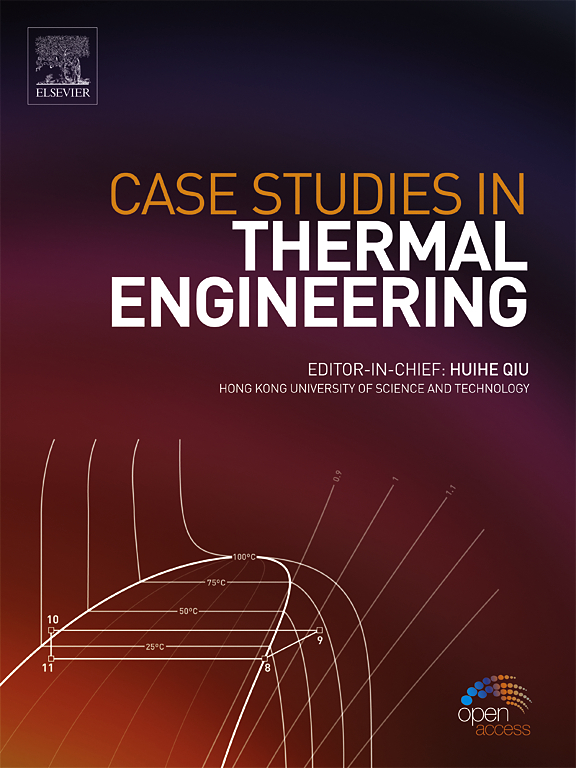Exergy-economic based multi-objective optimization and carbon footprint analysis of solar thermal refrigeration systems
IF 6.4
2区 工程技术
Q1 THERMODYNAMICS
引用次数: 0
Abstract
The increasing carbon footprint associated with conventional cooling methods underscores the urgent need for sustainable alternatives. This study investigates the economic and environmental advantages of various solar-thermal cooling systems, with a focus on optimizing their performance across different climate conditions. Employing a multi-objective approach, the research emphasizes exergy-economic indices to optimize selected cycles. The analysis covers multiple refrigeration technologies, including liquid absorption, solid adsorption, and solid desiccant cycles. Results indicate that the liquid absorption cycle performs optimally in hot, arid climates, reducing the payback period to approximately 8 years when optimized. In hot and humid regions, the solid desiccant cycle proves most effective due to its superior humidity control, yielding a payback period of 5.3 years. For cold and mountainous areas, the solid adsorption cycle is preferred, with a payback period of 13.5 years, while moderate and humid climates benefit from the solid desiccant cycle for both cooling and humidity regulation. The exergy-economic factors for the solar refrigeration systems across semi-arid, hot and arid, hot and humid, cold and mountainous, and moderate and humid climates are 0.758, 0.602, 0.698, 0.74, and 0.575, respectively.
基于多目标优化和碳足迹分析的太阳能热制冷系统的能效-经济分析
与传统冷却方法相关的碳足迹不断增加,凸显了对可持续替代方法的迫切需求。本研究调查了各种太阳能-热能冷却系统的经济和环境优势,重点是优化其在不同气候条件下的性能。研究采用多目标方法,强调优化选定循环的能效经济指标。分析涵盖多种制冷技术,包括液体吸收、固体吸附和固体干燥剂循环。结果表明,液体吸收循环在炎热、干旱的气候条件下表现最佳,优化后投资回收期可缩短至约 8 年。在湿热地区,固体干燥剂循环因其出色的湿度控制能力而被证明是最有效的,投资回收期为 5.3 年。在寒冷的山区,固体吸附循环是首选,投资回收期为 13.5 年,而在温和潮湿的气候条件下,固体干燥剂循环在制冷和湿度调节方面都有优势。在半干旱、炎热干旱、炎热潮湿、寒冷山区和温和潮湿气候条件下,太阳能制冷系统的能效经济系数分别为 0.758、0.602、0.698、0.74 和 0.575。
本文章由计算机程序翻译,如有差异,请以英文原文为准。
求助全文
约1分钟内获得全文
求助全文
来源期刊

Case Studies in Thermal Engineering
Chemical Engineering-Fluid Flow and Transfer Processes
CiteScore
8.60
自引率
11.80%
发文量
812
审稿时长
76 days
期刊介绍:
Case Studies in Thermal Engineering provides a forum for the rapid publication of short, structured Case Studies in Thermal Engineering and related Short Communications. It provides an essential compendium of case studies for researchers and practitioners in the field of thermal engineering and others who are interested in aspects of thermal engineering cases that could affect other engineering processes. The journal not only publishes new and novel case studies, but also provides a forum for the publication of high quality descriptions of classic thermal engineering problems. The scope of the journal includes case studies of thermal engineering problems in components, devices and systems using existing experimental and numerical techniques in the areas of mechanical, aerospace, chemical, medical, thermal management for electronics, heat exchangers, regeneration, solar thermal energy, thermal storage, building energy conservation, and power generation. Case studies of thermal problems in other areas will also be considered.
 求助内容:
求助内容: 应助结果提醒方式:
应助结果提醒方式:


